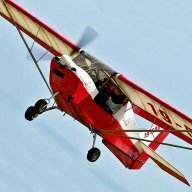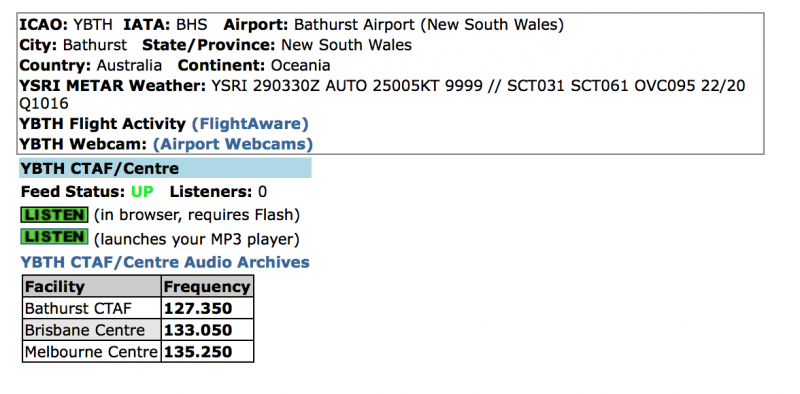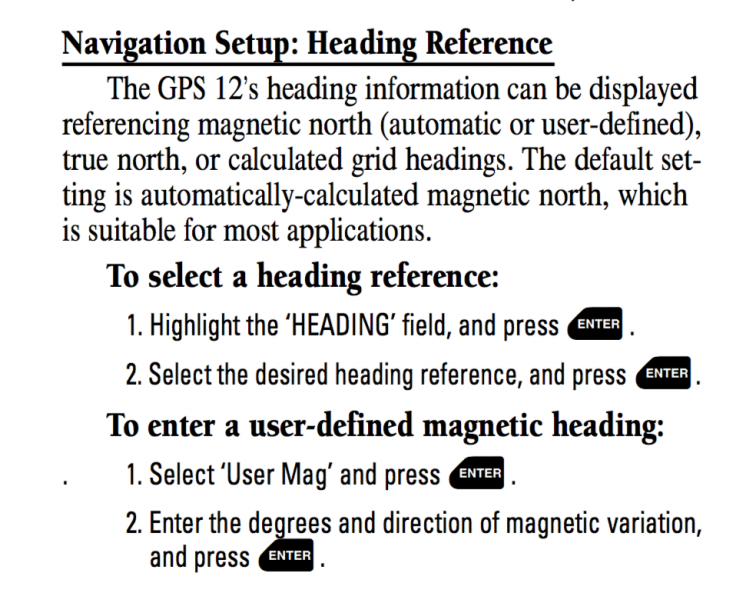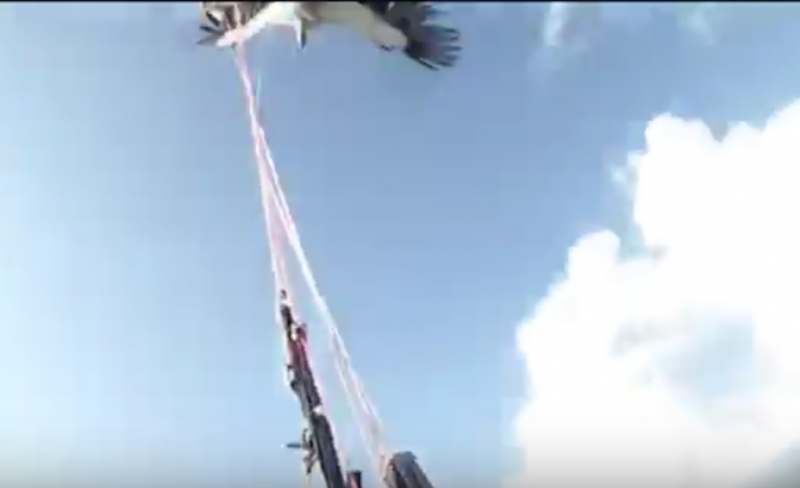-
Posts
2,782 -
Joined
-
Last visited
-
Days Won
60
Content Type
Profiles
Forums
Gallery
Downloads
Blogs
Events
Store
Aircraft
Resources
Tutorials
Articles
Classifieds
Movies
Books
Community Map
Quizzes
Posts posted by Garfly
-
-
Violation scenarios aside, there are times when it's a comfort to feel un-invisible. In a given chunk of busy Class G airspace, I wonder, what, typically, is the proportion of aircraft with transponders to those without. I've often heard controllers taking pains to keep 1200 paints, and those with codes, aware of each other's proximity (above and beyond the call of duty, in a way). But wouldn't that effort be a bit hopeless if there were many more UFOs out there (legally) invisible to any watchful eye. I guess it comes down to the 'big sky theory' of separation; which holds pretty well for a lot of this country but, on the other hand, there are quite a few choke points on East coast J-curve, where all kinds and classes of traffic gets funnelled - a real Russian Roulette situation. You'd think it might be a good spend of CASA safety funds if all recreational aircraft were subsidised to SSR equip. Of course, it's not feasible to expect controllers to be traffic cops for Class G. But I'm looking forward to cheap ADSB In&Out for the masses - with TCAS. (Preferably voice-prompting, since, obviously, the V in VFR needs less, not more, screen time..)
-
Thanks, Ian. That's good to know. Could one practical outcome be that if the controller sees a primary paint getting close to a Romeo area, for example, that he/she might call up to warn the "VFR aircraft x-miles south of YYY you are approaching R123. Remain clear." for example? Or, let's say that Willy sees that an unknown primary paint has busted its airspace, would that controller ask Brisbane Centre to try to contact that aircraft (in the knowledge that Centre controllers can also see who it is they're talking about). Anyway, it's interesting to know that those of us without transponders are, at least near terminal areas, visible to controllers, albeit without, I guess, any useful altitude information.
-
Actually after I tracked down that particular LiveATC channel the other day in response to aplund's query I just happened to tune in for a listen. I heard a controller working hard to help a VFR pilot caught on top somewhere between Richmond and Bathurst. (I think). The ATC guy was enlisting the help of all kinds of other flights in the area; asking whether they could see any gaps where they were. Airliners got involved too. He was busy with it for a good 20 minutes. Turned out well in the end. Might have been you shags! ;-)
And yes, I was a bit surprised at how many sectors were being handled on that one frequency and what you've explained above clears that up.
One question I had: Do the controllers who oversee traffic in the Hunter Valley / Williamtown region (I mean on Area, such as 125.7) have access to primary radar returns on their screens? I'm thinking maybe on relay from Willy itself, which I presume would have that capability? That is, can they see nil transponder traffic and thus be in a position to warn of possible conflicts that involve primary paints? Though I suppose without accurate altitude information there's not much to be done even if they were visible.
-
-
Oh, now I get it. You only missed those calls from BNE because you were actually transmitting at the time.
I thought it was because you had to change frequencies.
Anyway, you're right, 2 channel (receive, at least) is highly desirable in busy environments.
But even for not so busy places. How about the time you need to tune to local CTAFs as you pass by on a cross country. That can be a long time away from Area as your 10 mile circle hops from airfield to airfield.
-
Interesting story, Pearo.
Makes one wish for a radio with dual channel receive.
(Although you've got to be doubly alert with those types to avoid transmitting on the wrong frequency.
ATC must be fed up with getting CTAF reports.)
-
A heartwarming ATC-are-there-to-help story from AOPA (USA):
-
 5
5
-
-
Yet another aerial adventurer survives to soar another day:
https://www.youtube.com/watch?v=QkqZGaJasDc
(I can understand why he's disabled comments on YouTube.
After surviving the loch he'd have drowned in free advice.)
-
 1
1
-
-
True, OldK, new fangled technologies fail us as much as the ancient ones.
(Though most of us seem to carry about 5 levels of back up these days.)
Still, it seems to me the best use of heading info these days (as opposed to track info) is in working out winds aloft.
I don't mean by way of E6B and lots of mental figurin' out.
Now it's all electronic compasses feeding heading to EFIS boxes and, voila!
Real time winds aloft. (at least in theory).
With all the other info the EFIS has on hand (track, GS, OAT and air data) all it needs is 'heading' to continuously calculate W/V.
And that is useful as you poke around the sky looking for the optimal level.
But, otherwise, I can't see much use in knowing where we're pointed when we know perfectly well where we're going and how long it'll take.
-
Sounds a lot easier. ;-)
Hell, we're still having so much trouble with that thousand year old technology - especially in our magnetically polluted cockpits. One wonders why we bother. Especially when the modern alternative is sooooo accurate and sooooo reliable and - especially in your well ventilated office - soooo much easier than wrangling large paper sheets to keep on track. Anyway, I suppose it's useful to learn nav in the style of the pioneers - and ded reckoning can be a lot of fun - but in any case, soon you won't be forced to tangle with that troublesome lodestone. (Except to stay legal until the laws finally catch up.)
-
 2
2
-
-
Hi Mark,
I believe that the best way to check your compass against your gps is to fly a square course and to note the differing readings on each of the four directions. This is the only way to cancel out the wind drift factor, that is, the difference between where you're pointing and where you're going - on each leg (assuming the wind remains constant over the course). The problem is a gps never knows (or cares) which way it's actually pointing, whereas that's the only thing a compass knows - or is supposed to know! - which brings us back to the original post. ;-)
-
DWF, that is True.
Which brings us back to the original post. ;-)
-
Hi Andy,
You wrote in #31 above that "GPS generally show true bearings (mag var adjusted)"
I'd always assumed that the default on GPS devices (portables, at least) was Magnetic heading (variation automatically accounted for) and that you needed to go into the menus to set True if you wanted it. I just checked on a couple of older Garmins that I have hanging about and that does seem to be the case. Maybe it's changed more recently or maybe I misunderstood your drift. This is the relevant bit of the user manual for the GPS12.
(By the way, if we planned to fly from Esperance to Carnarvon, the point would be moot. ;-)
-
Those who liked Mike Busch's article might want to check out the book he brought out a couple of years back.
http://www.amazon.com/Manifesto-Revolutionary-Approach-Aviation-Maintenance/dp/1500209635
-
What a world-view, as flyers, we're privileged to enjoy. Incroyable!
(video posted on YouTube by Thierry Peuzin last December.)
-
 3
3
-
-
Not sure if this article helps with the original question but I reckon it's always a good (re)read.
http://www.gami.com/articles/egt_myths.pdf
-
 2
2
-
 1
1
-
 1
1
-
 1
1
-
-
Yes, I agree ... credit's due to that Russian chap who lived it, filmed it and stuck it on the global village noticeboard for us all to enjoy.
;-)
-
-
-
Yeah, and I love how this short video is structured (by reality) into a kind of three act play.
Everything is calm and normal at the start - we can even hear our hero (a free-flying Russian) whistling in satisfaction at the wonders of the world below; the sheer joy of flight (we've all been there). Then, bang, his outcry - just before we see the swoop - sets off the crisis. After some crazy confused action, including finally falling out of a tree, there comes a point of resolution: "I'm fine! I'm okay" he shouts (as much to himself and the universe, as to proximate companions).
Now the play shifts as he addresses 'us' directly. He explains calmly, though with many expletives deleted, what it is we've just seen (experienced). His act of turning our viewpoint around shifts the play's register, suddenly, our pure pov is transformed to reveal the hero as an actual 'other' character. Then he (and we) discover the antagonist, still tangled in the shrouds. Showing more sorrow than anger,though, he tries to free it. More drama ensues around the age old issue of interspecies misunderstanding (international too, in this case ;-). But finally our avian friend, too, gets to squawk "I'm fine! I'm okay!" (I'm pretty sure I heard that) and all's well with the world once more.
You can hardly ask more than that from a 03:75' dramatic experience.
(It's a bit frustrating that the cam's limited POV means we miss a key moment - the reserve 'chute popping. But hey, withholding stuff has always been a useful dramatic device. ;-)
Truth is stranger than fiction. Ain't that the truth in the age of action-cam/YouTube.
-
 1
1
-
-
-
 3
3
-
-
I'm pretty sure this was a raptor - or vulture - attack (as happens to aircraft, too) and not a mere 'collision'.
Anyway, as it happens, this amazing short story turns out well for man and beast:
-
 4
4
-
 1
1
-
-
The only evidence I've ever seen of what dead flyers think was in this film:
-
 1
1
-
-
Thanks erd72 ... that video was really interesting.
I think it's the first time I've seen on-board footage of a forest arrival by airframe parachute.
This link below shows some of the onboard footage of the famous Cirrus splashdown in the Pacific last year:
http://www.flyingmag.com/technique/accidents/cirrus-sr22-pilot-releases-selfie-video-ditching.
And referring to that clip, veteran American aviation writer Richard L Collins wrote recently:
"I was one of the original doubters about the airframe parachute in Cirrus airplanes. Over the years I doubted less but a short while ago I watched a video that turned me into a true believer. Almost everyone has seen the
of the Cirrus splashing down under its parachute after a fuel problem on a flight from the mainland to Hawaii. What hasn’t been widely seen is the video that the pilot took on his way to the sea under the chute. It is sort of the ultimate selfie of a pilot who kept his cool. He had the cabin door open on the way down and at one point he looked straight up, through the door opening, at the beautiful canopy that was lowering the airplane. I looked at that and thought hotdamn, if I got a do-over I would want one of those."
http://airfactsjournal.com/2016/02/forced-landings-getting-shoes-muddy-biggest-risk/
And in another article (in the web journal "Air Facts") he revisits his 'conversion' :
"There were a couple of notable Cirrus chute uses recently. In both cases, the engine failed and in both cases the pilot apparently decided to use the chute instead of fly to a conventional forced landing. Is that a manly action? Absolutely. If a pilot has any doubt about a situation and has a chute available, it should be used ... The pilot’s job is to minimize risk. I have nothing but admiration for the chute-poppers and feel that what they did was get their money’s worth out of the device. "
http://airfactsjournal.com/2015/12/lose-control-itll-ruin-whole-day/
-
 1
1
-






Designing a glider
in Gliders and Soaring Aircraft Usergroup
Posted
The Goat and the Eagle ;-)